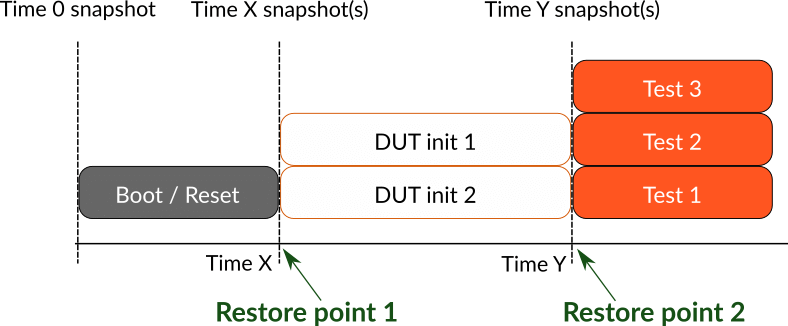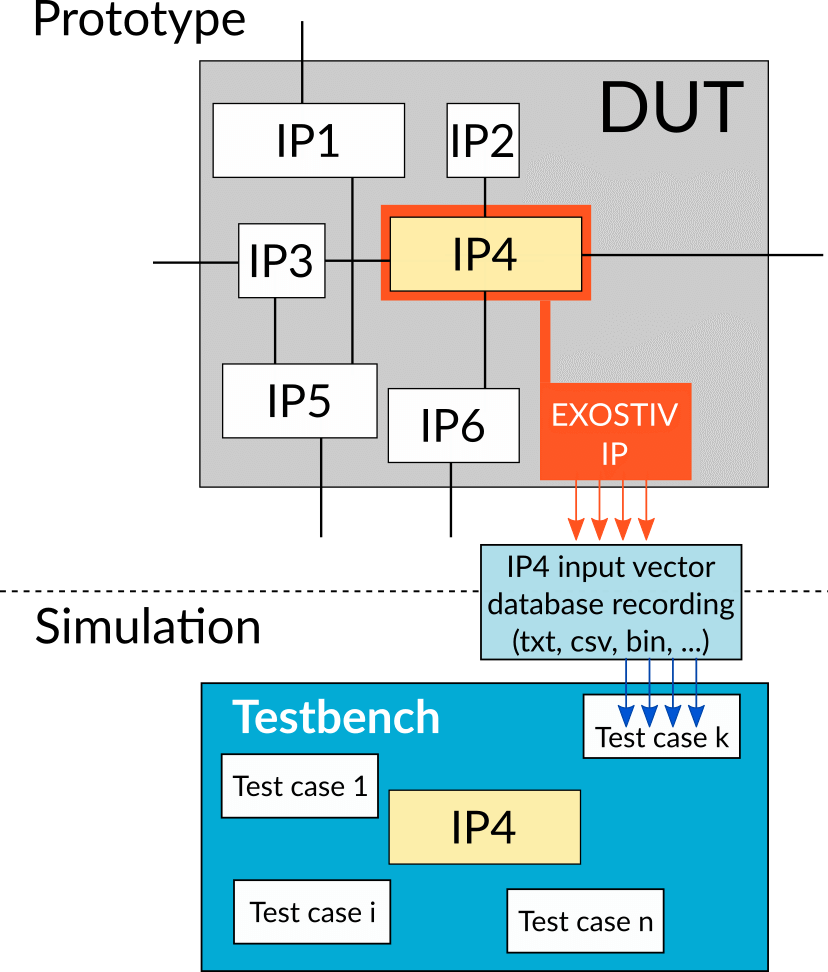Exostiv boosts RTL simulation
It is essential to reduce the wasted machine cycles used for simulation workloads.

Simulation dominates ASIC/SoC/FPGA verification process
‘The 2020 Wilson Research Group ASIC and FPGA Functional Verification Study’ reports that an ASIC, SoC or FPGA designer can spend up to 40% of the total verification time on creating testbenches, writing tests or running simulation. In addition a similar share of the time is spent on debug – and this involves running simulation too.
It is safe to say that simulation is the most dominant technique in the overall verification effort.
Simulation speed is losing the race against FPGA complexity.
Over the last decade, simulation software has improved at many levels. Simulation software needed these improvements so they would be able to cope with the increasing complexity of designing FPGAs and chips with hundreds of millions gates.
Simulation software now supports more languages, assertions, and verification methodologies such as Accellera UVM. Code coverage now includes testbench coverage – in order to keep track of whether a team has exercised specific test stimuli.
Interestingly, these efforts have improved the test coverage, provided metrics for signoff and standardized verification approaches based on simulation, but did not accelerate simulation that much. Even the most recent claims from simulation software vendors show RTL simulation acceleration by 5x thanks to the execution of the simulation on multi-core servers… whereas the complexity of FPGA has been multiplied by 100 in the same period of time!
In 2020, more than 80% of FPGA designs had at least 1 non-trivial bug escape to production (source: The Wilson Research Group)
How to make the most of the simulation time
On advanced and complex systems, running RTL simulation can reach several hours – if not days.
That is why it has become critical to make the most of the time spent in simulation, and limit – as much as it is possible – the wasted machine cycles. Otherwise, our verification techniques are at risk of becoming irrelevant.
In our experience, the following approaches have proven to be successful:
– Performing ‘per IP’ simulations to verify them helps spread the effort on multiple engineers in parallel and run shorter simulations;
– Make use of ‘snapshot’ simulation features – which consists in saving the state of a simulation and re-start from there to run specific simulations.
In the illustration below, two frequent snapshots are saved – after the boot of the processor and after the DUT is initialized respectively. This conveniently helps running combinations of initialization sequences and test stimuli without having to simulate the boot sequence over and over again.

Full system bugs can require multiple days of simulation.
As demonstrated in this presentation from Cadence on simulation tools, full-chip bugs, which occur when the full system is put together, can require days of simulation. A ballpark estimate is up to 54 hours of simulation for 43 milliseconds of SoC HW runtime! For these kinds of bugs, it has become equally crucial to:
– Speed up simulation; (that’s the job of simulation software vendors)
– Make sure that the simulated models are accurate; (EXOSTIV can definitely help !)
– Provide additional visibility from the real system to converge faster on finding the bug; (EXOSTIV can definitely help!)
What EXOSTIV can do to BOOST simulation.
Exostiv lets you record very long data sets from inside FPGAs running at full speed of operation.
Typical probing scenarios with their most common usages are summarized in the two tables below:
The first table lists common usages that boost simulation – illustrated below the table:
| What is probed | Target usage |
|---|---|
| Specific IP inputs (or group of IPs) | - Overcome modelling issues; - Make test case match reality. |
| Specific IP outputs (or group of IPs) | - Reference response database; - See the effects of non- or hardly simulable elements, (such as CDC or metastability). |

| What is probed | Target usage |
|---|---|
| A full system bus | - Verify / develop software; - Evaluate system overall efficiency / performance over large - and real - data; - Check system behaviour; |
| Specific nodes | - Functional verification and debug. |
Conclusion
Exostiv complements simulation by providing a source of real-world stimulus for IPs, groups of IPs and full systems. It therefore helps overcome modelling problems that are the most common source of FPGA bugs escaping to production. Coupling simulation with the huge recording capability of Exostiv means you avoid wasting your quota of machine cycles dedicated to simulation and improves the quality of FPGA system sign-off.
As always, thank you for reading.
– Frederic

